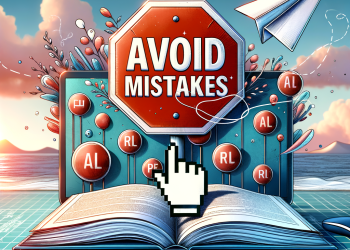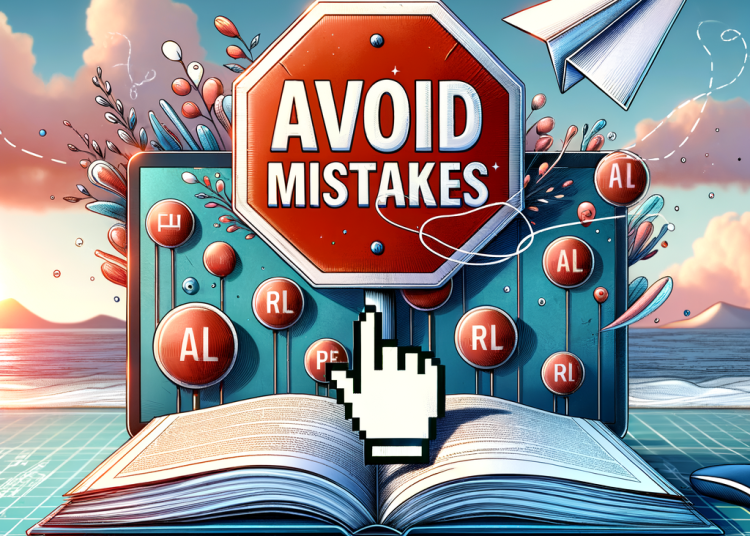Course Mistakes to Avoid: Must-Have Tips for a Smooth Launch
Launching a new course can be an exciting yet challenging endeavor. Every educator or entrepreneur dreams of a seamless launch that draws eager learners, builds engagement, and generates positive feedback. However, many first-time creators fall into avoidable pitfalls that not only hinder their launch but also affect the long-term success of their course. Understanding common course mistakes and implementing strategies to sidestep them are essential for anyone looking to make a meaningful impact in the learning space.
In this article, we’ll explore critical course mistakes to avoid and provide must-have tips that ensure your course launch goes smoothly and sets the foundation for continued growth.
Why Identifying Course Mistakes Early Matters
Being aware of potential course mistakes can save you time, money, and frustration. Launching a course involves multiple phases—planning, content creation, marketing, sales, and more. Overlooking small details during any stage can snowball into major issues that impact your credibility and revenue.
For example, failing to define a clear target audience or creating content that doesn’t solve a real problem are common blunders that lead to low enrollment and poor student satisfaction. By preemptively knowing these common mistakes, you can build a course that resonates with your ideal learners and stands out in a crowded market.
Course Mistakes in Planning and Content Development
1. Skipping Audience Research
One of the gravest course mistakes is launching without thorough audience research. Understanding your potential students’ pain points, goals, and learning preferences is crucial for tailoring content that truly meets their needs. Creating a course based on assumptions rather than data often results in content that misses the mark.
Tip: Conduct surveys, interviews, or analyze forums related to your topic before you build your course. This will give you valuable insight into what learners are struggling with and what outcomes they desire.
2. Overloading Content
Another common mistake is overwhelming students with too much information. While it’s tempting to pack your course with every detail you know, a bloated curriculum can cause confusion and burnout.
Tip: Focus on delivering clear, actionable lessons that build progressively. Break content into manageable chunks and include summaries or quick-reference materials to reinforce learning.
3. Ignoring Accessibility and User Experience
Courses that are difficult to navigate or don’t accommodate different learning styles can frustrate students and lead to drop-offs. Neglecting accessibility—such as failing to provide captions, transcripts, or mobile-friendly formats—limits your course’s reach.
Tip: Test your course on multiple devices and consider adding diverse formats like videos, quizzes, and downloadable resources to engage different learners. Make sure that navigation is intuitive and that learners can easily track their progress.
Marketing Mistakes That Can Derail Your Launch
4. Inadequate Pre-Launch Marketing
Relying solely on launching and hoping students will find you is a common trap. Without building anticipation and awareness beforehand, your course launch might go unnoticed.
Tip: Start promoting your course weeks in advance using email lists, social media, webinars, and collaborations. Generate buzz by sharing sneak peeks, success stories, or limited-time offers.
5. Poor Pricing Strategy
Setting your course price too high or too low can harm enrollment numbers. A price that doesn’t align with the perceived value of your course or your target audience’s budget can deter buyers.
Tip: Research competitors and test different pricing models (one-time payments, subscriptions, payment plans) to find what resonates with your audience. Consider offering early-bird discounts or bonuses to encourage initial sign-ups.
6. Neglecting Clear Sales Messaging
Unclear or generic messaging about what your course offers and who it’s for can confuse potential customers. Without communicating the benefits and outcomes effectively, even interested learners may hesitate to enroll.
Tip: Craft compelling sales copy that highlights the transformation your course provides. Use testimonials and emphasize how the course addresses specific problems your audience faces.
Post-Launch Mistakes to Watch Out For
7. Overlooking Student Support
After launch, many creators underestimate the importance of prompt and helpful student support. Ignoring learner questions or failing to address technical issues can damage your reputation.
Tip: Set up systems for timely responses through email, forums, or live Q&A sessions. Encouraging community engagement can also help learners feel connected and supported.
8. Not Collecting Feedback
Failing to gather and act on feedback deprives you of valuable insights for improvement. Students can highlight gaps, confusing material, or technical issues you might not notice.
Tip: Use surveys, direct messages, or course analytics to collect feedback regularly. Iterating your course based on this information will enhance the learning experience and help retain students long-term.
Final Thoughts: Avoiding Course Mistakes for Lasting Success
Launching a course successfully goes beyond simply creating great content. Avoiding these common course mistakes—from poor planning and content overload to inadequate marketing and support—lays a strong foundation for a smooth launch. By focusing on your audience’s needs, crafting clear messaging, pricing thoughtfully, and fostering ongoing engagement, you position your course for sustainable growth and impact.
Remember, every successful course creator started somewhere, learning from early stumbles and refining their approach. With these essential tips in hand, you’re well on your way to a smooth, rewarding course launch that delights your learners and fuels your passion for teaching.







































